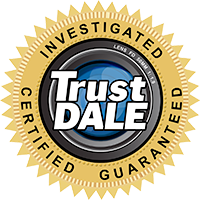Don't Replace your Broken Concrete-Repair It!
Don’t Replace Your Broken Concrete—Repair It!
It’s often said that your home’s concrete—your driveway, sidewalk, patio and pool deck—is its calling card. It’s often the first thing a visitor or family member sees when they come to your home. So, when it cracks, breaks, sinks and settles, it not only looks bad, it can hurt your home’s curb appeal and its value (not to mention your standing with your neighbors!). And, of course, uneven concrete slabs can present serious tripping hazards that you as the homeowner may be liable for.
So, if you’ve made the wise decision to address your home’s concrete problems, your first thought may be to replace it. And while that would certainly fix the curb appeal issue—at least for a while—there may be a better alternative.
The Hassle of Total Concrete Replacement
Replacing a sidewalk or driveway is a seriously big job—one that will leave you and your family without the use of your concrete for days or even weeks. First, the old concrete must be broken up and taken away. Usually this means jackhammering it into smaller, more manageable pieces. And jackhammering means noise—lots of it. Just make sure you prepare your neighbors ahead of time.
Once the concrete is broken up and removed. New concrete must be mixed and poured into place. Once that’s done, it must harden and cure. This can take up to a week or two, depending on a variety of factors. During this time, your sidewalk, driveway, pool deck or patio will be unusable. While this might be tolerable with a patio or pool deck, an unusable driveway or sidewalk can be a real nuisance.
The main issue, however, with replacing your concrete is, you aren’t really addressing the reason it likely failed in the first place. That’s because most concrete sinks and settles due to problems with the soil beneath. Excess moisture can cause soil to soften. Drought can cause it to shrink. And soil can even wash away completely if enough water is present, like during a major rainstorm or snow melt. So, when you pour new heavy concrete slabs on old unstable soil, chances are they will sink and settle just like the old stuff did. That means you’re back to square one.
The Best Option for Concrete Repair
Instead of replacing old worn-out concrete slabs, we recommend repairing them and resurfacing them so they look like new. Thanks to modern technology, this option can give you like-new appearance and capability in days, rather than weeks.
First, a rapidly expanding polyurethane foam is shot under the slabs. As it expands and hardens, it not only lifts the concrete above it but also fills voids and compresses the soil beneath it. This permanently stabilizes your concrete so it won’t sink again.
Once your slabs are level, cracks are repaired to keep moisture from getting underneath. Then a high-tech, super-strong polymer cement is spread over the surface, giving it a brand-new look. Lastly, control joints are cut and sealed with a silicone caulk, and then everything is covered with a sealant that bonds with the new concrete surface.
This whole process takes about a day in most cases, and you can return your concrete to normal use just 48 hours later. And, this can all be done with much less mess and noise than total replacement.
So, if you’re thinking of renewing your home’s “calling card”—and we really think you should—consider repairing it rather than replacing it. In most cases, it really is the best option.
 4.9
4.9 



